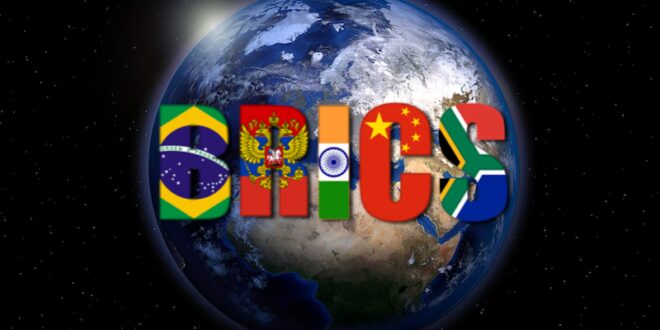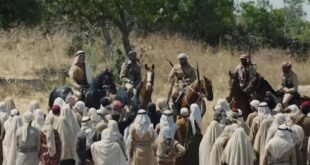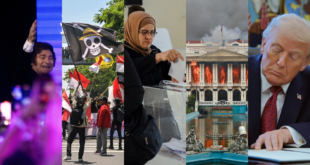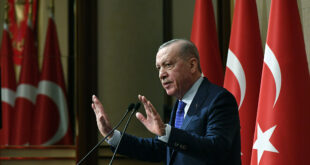At the Konstantinovsky Palace in St. Petersburg, Russian President Vladimir Putin held his first meeting with Dilma Rousseff, President of the New Development Bank (NDB), established by the BRICS (Brazil, Russia, India, China, South Africa) in 2015. Rousseff, the first woman to lead the bank, was appointed to head it earlier this year by Brazilian President Luiz Inacio Lula da Silva.
It is a multilateral development bank established with an initial capital of $100 billion. According to the NDB stipulated primary functions, it has to cooperate with international organizations and other financial entities, and provide technical assistance for projects to be supported by the Bank.
Taking this into account, the main objectives of the NDB can be summarized as follows: promote infrastructure and sustainable development projects with a significant development impact in member countries; establish an extensive network of global partnerships with other multilateral development institutions and national development banks; build a balanced project portfolio giving a proper respect to their geographic location, financing requirements and other factors.
The idea for setting up the bank was proposed by India at the 4th BRICS summit in 2012 held in Delhi, but was finally created three years later. On 21 December 2016, the NDB signed its first loan agreement. The bank issued loans of up to $40 billion by 2022 in South Africa. Since its creation, it has supported various projects in member countries.
In early March 2022, in response to the Russia-Ukraine conflict, the New Development Bank announced that it put new transactions with Russia on hold. Russia launched its special military operation on neighboring Ukraine. The NDB, the multilateral bank set up by the BRICS states, is not considering new projects in Russia as it operates in line with restrictions imposed in financial and capital markets.
Late July bilateral meeting between Putin and the former Brazilian President Rousseff was to discuss BRICS financial questions and emerging geopolitical developments. Russia and Brazil are stauch members, notably in 2014 Putin and Rousseff stood firmly at the origins of the creation of this financial structure.
In today’s changing conditions, BRICS has been very concerned about de-dollarization and strongly advocating for its currency. Thus in the discussion, July 26 in St. Petersburg, Putin stressed doubtlessly that Rousseff uses her rich experience in public work and knowledge in this area to develop the institution, which is very important in today’s time.
In today’s conditions, this is not easy to do, given what is happening in world finance and the use of the dollar as an instrument of political struggle. But the members of BRICS, are not “friends” against someone, they work in each other’s interests. This also applies to the financial sector.
“In general, we are good participants in this organization, we fulfill everything on time, all our obligations to it. We know that there is a question about the liquidity of the bank, there are some ideas that come from you, from your staff, and we will support this,” Putin said at the meeting. “Relations between our countries in the BRICS are developing in national currencies, and settlements are increasing. In this regard, the bank can also play a significant role in the development of joint activities.”
It was not the first time that Dilma Rousseff visited St. Petersburg. She vividly recalled that in 2013 she was part of the G20 summit held in Konstantinovsky Palace. She stressed in comments: “I am very glad to see you again, and we really stood at the origins of the creation of the New Development Bank at the Fortaleza summit in 2014.”
The world is really now going through a period of a number of challenges, there are crisis trends, inflation in the countries of the developed world, in the developing world, countries are facing the problem of debt. And of course, first of all, the countries of the developing world are now in difficult conditions, according to Rousseff.
Undoubtedly, the Russia-Africa summit is very important for those who are interested in the development of the Global South. Russia is a very important partner within the framework of the BRICS, within the framework of the New Development Bank, and indeed fulfills all of its obligations to them. Indeed, the bank faces a number of problems, and above all it concerns liquidity.
The Bank should play an important role in the development of a multipolar, polycentric world. We must be determined to raise funds in the markets of partner countries. I also believe that there are no obstacles for the countries of the developing world to carry out their foreign trade operations in national currencies among themselves.
“Our development strategy for the period from 2022 to 2026 assumes that about 30 percent of the funds should be raised in domestic markets. It is also very important to raise funds in different currencies, not only in dollars or euros,” Rousseff noted, and added, “We are very aware of the difficulties that developing countries face in raising funds. They need resources to finance infrastructure projects, to build digital logistics, social logistics and, of course, also to solve environmental problems.”
Rousseff welcomed the initiative to host the Russia-Africa summit, because most of these African countries are often left without the necessary resources. Everyone focuses on the issue of their debt, ignoring the need for resources that is observed there. And it seems unacceptable to impose any conditions and requirements in exchange for funding, as is done now by international multilateral organizations. Most of these questions are on the agenda during the next 15th BRICS summit scheduled for August 22nd – 24th, 2023, at the Sandton Convention Centre in Johannesburg, South Africa.
The issues of expanding the institute by admitting countries of the developing world into it are also a priority. Rousseff added she would also meet South African President Cyril Ramaphosa in Russia, where she expects to discuss the expansion of the bank, which in recent years admitted the United Arab Emirates, Bangladesh and Egypt as members.
Russian Prime Minister Mikhail Mishustin, during a meeting in May, 2023, with Rousseff, said that the goal of the BRICS bank was to protect the trade and economic relations of the union from the impact of sanctions from unfriendly countries. From the activities of the bank, Russia expects the strengthening of investment cooperation in the BRICS format, the promotion of promising projects in various fields, as well as the emergence of new points of growth for the national economies of the five states.
In May 2022, the New Development Bank set up a regional office in India in the state of Gujarat with the goal of financing and observing infrastructure projects in both India and Bangladesh. In May 2023, Saudi Arabia expressed its intention to join the NDB. Currently, more than 40 countries have expressed desire in joining the BRICS group. That BRICS has the potential of becoming a global player is a fact, since more countries intend to join the group, and if we look carefully, each of them has significant assets to contribute: some have huge financial potential, others have huge demographic potential, others have expertise in particular industries.
More countries have become interested in joining the group: Afghanistan, Algeria, Argentina, Bahrain, Bangladesh, Belarus, Egypt, Indonesia, Iran, Kazakhstan, Mexico, Nicaragua, Nigeria, Pakistan, Saudi Arabia, Senegal, Sudan, Syria, United Arab Emirates, Thailand, Tunisia, Turkye, Uruguay, Venezuela, Zimbabwe. This growing interest for the BRICS project has various underlying motivations, which have to be accommodated within the broader framework.
Historically, the first meeting of the group began in St Petersburg in 2005. It was called RIC, which stood for Russia, India and China. Then, Brazil and subsequently South Africa joined later, which is why now it is referred to as BRICS. The BRICS member countries (Brazil, Russia, India, China and South Africa) collectively represent about 26% of the world’s geographic area and are home to 2.88 billion people, about 42% of the world’s population.
 Eurasia Press & News
Eurasia Press & News



